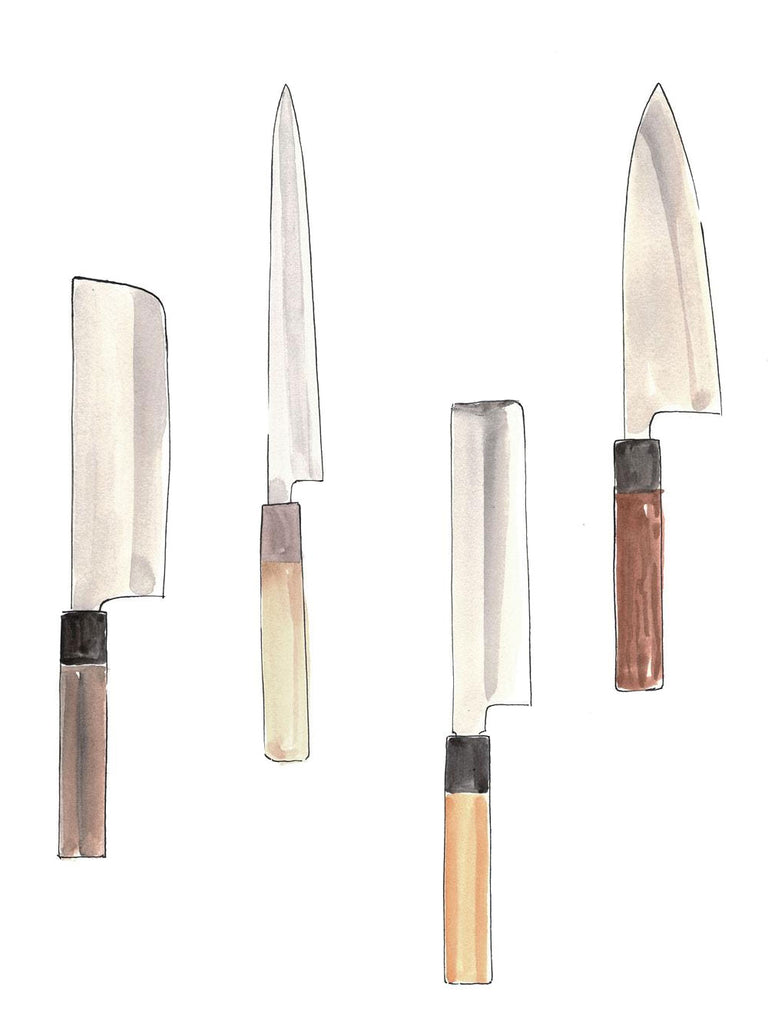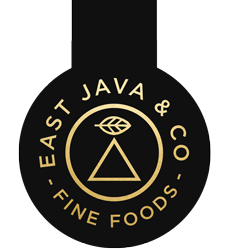
Photographs by Tadafusa
Illustrations by gattobravo
Japan has long tradition in making superior quality knives. The manufacture of highly specialized cooking knives in Japan became widespread in the 16th century, when blacksmiths working for members of Japan's noble soldier class, the samurai, competed against one another to create the best swords and knives.

The artisan blacksmiths of Japan are hand-forging knives that combine performance and beauty in an unique way. These knives are sought over by professional Chefs and cooking enthusiast from all over the world. Japanese knives are made with steel that has high carbon content and is harder than the one used in the West. As a result the edge will not bend easily and the knives stays sharper.

The most traditional knives are made from various types of carbon steel. These knives are unbeatable from a sharpness perspective but also require greater care from the user, as this type of steel does not have the rust-resistance of a typical Western knife made from stainless steel. More modern producers are using hybrid steels and layering of different types of steel to give the knives the advantages of carbon steel while providing a low maintenance product.

There are two main types of Japanese knives: Kataba and Ryoba.

Ryoba: Santoku, Petty, Nakiri, Gyuoto --- Kataba: Deba, Usaba, Yanagiba
Kataba: Single Bevel Knife
Kataba means one-sided edge and refers to knives that are sharpened on only one side of the blade.
Deba is a traditional single bevel kitchen knife used mainly for cutting fish and meat but it also works wonder on vegetables.

Deba Knife
Usuba is an old fashioned single-beveled vegetable knife. Its comparable to the Nakiri knife, except that it is thicker and single bevel.

Usuba Knife
Yanagiba is a long traditional single bevel sashimi knife used mainly for cutting fish.

Yanagiba Knife
Ryoba: Double Bevel Knife
Ryoba refers to knives that are sharpened on both sides of the blade like Western knives.
Santoku is a double-beveled all purpose kitchen knife. Santoku means three virtues: vegetable, meat and fish or chopping, slicing and mincing. At around 170mm, the blade is shorter than a chef’s knife, which is usually longer than 200mm. This makes it more handy and better suited for jobs that do not require a large blade.

Santoku Knife
Petty is a double-beveled small kitchen knife used for jobs that need the size and agility only a small knife can produce. Its comparable to a Western pairing knife.

Petty Knife
Gyuto is a double-beveled all purpose knife used for cutting vegetable, fish and meat. It’s comparable to a Western chef knife, although the blade is usually slightly thinner. Gyuoto means something like Cow Blade in Japanese and one can assume that it was originally designed to cut meat.

Gyuto Knife
Nakiri is an old fashioned double-beveled vegetable knife. The blade shape is rectangular which gives it some advantages to cutting vegetables.

Nakiri Knife













